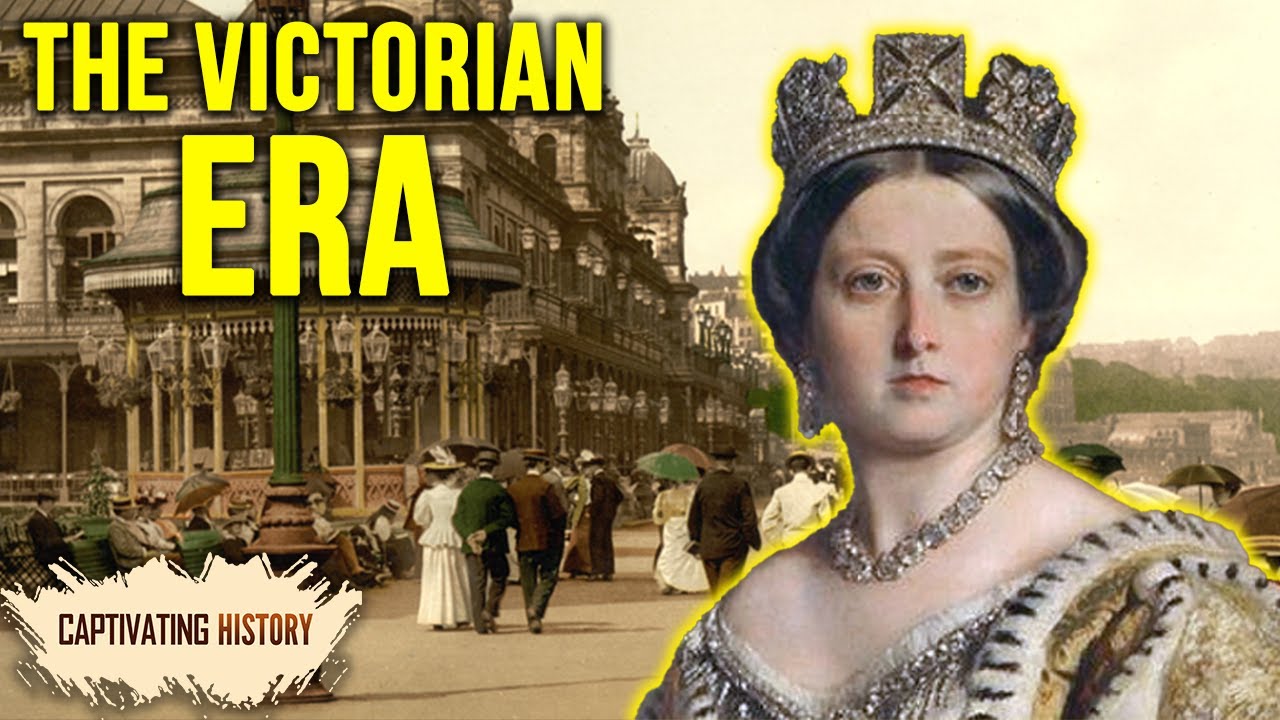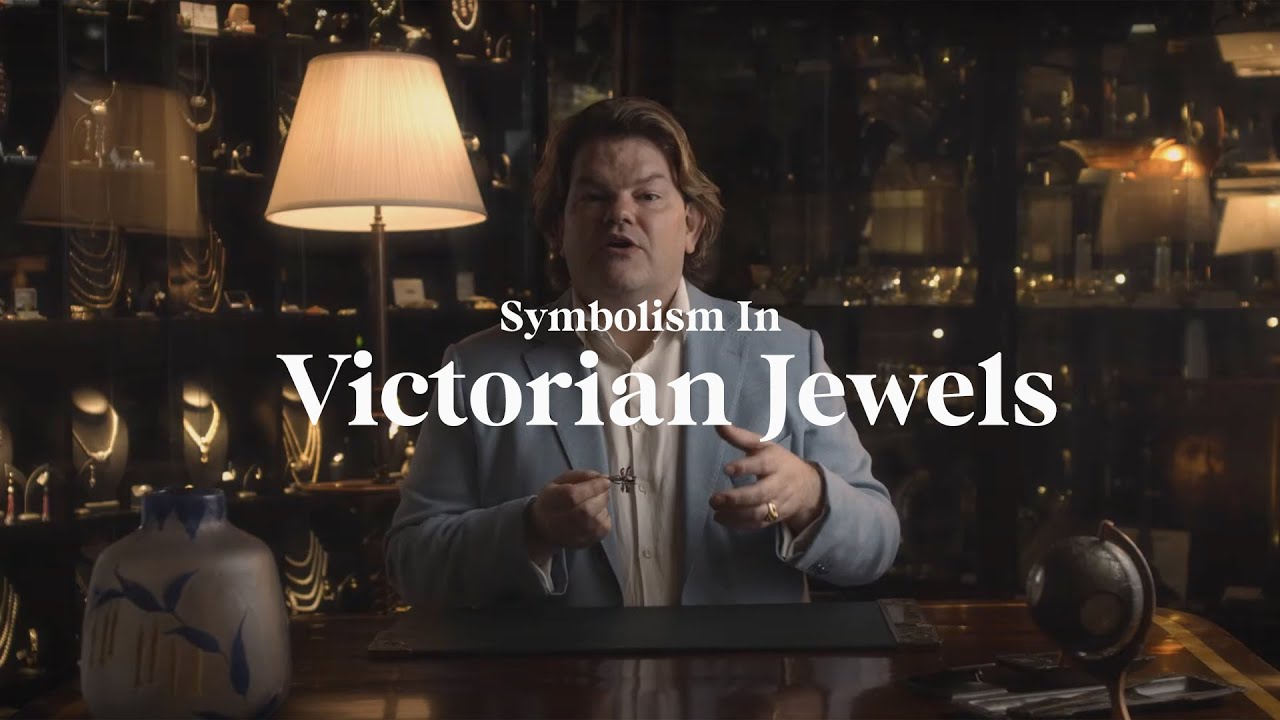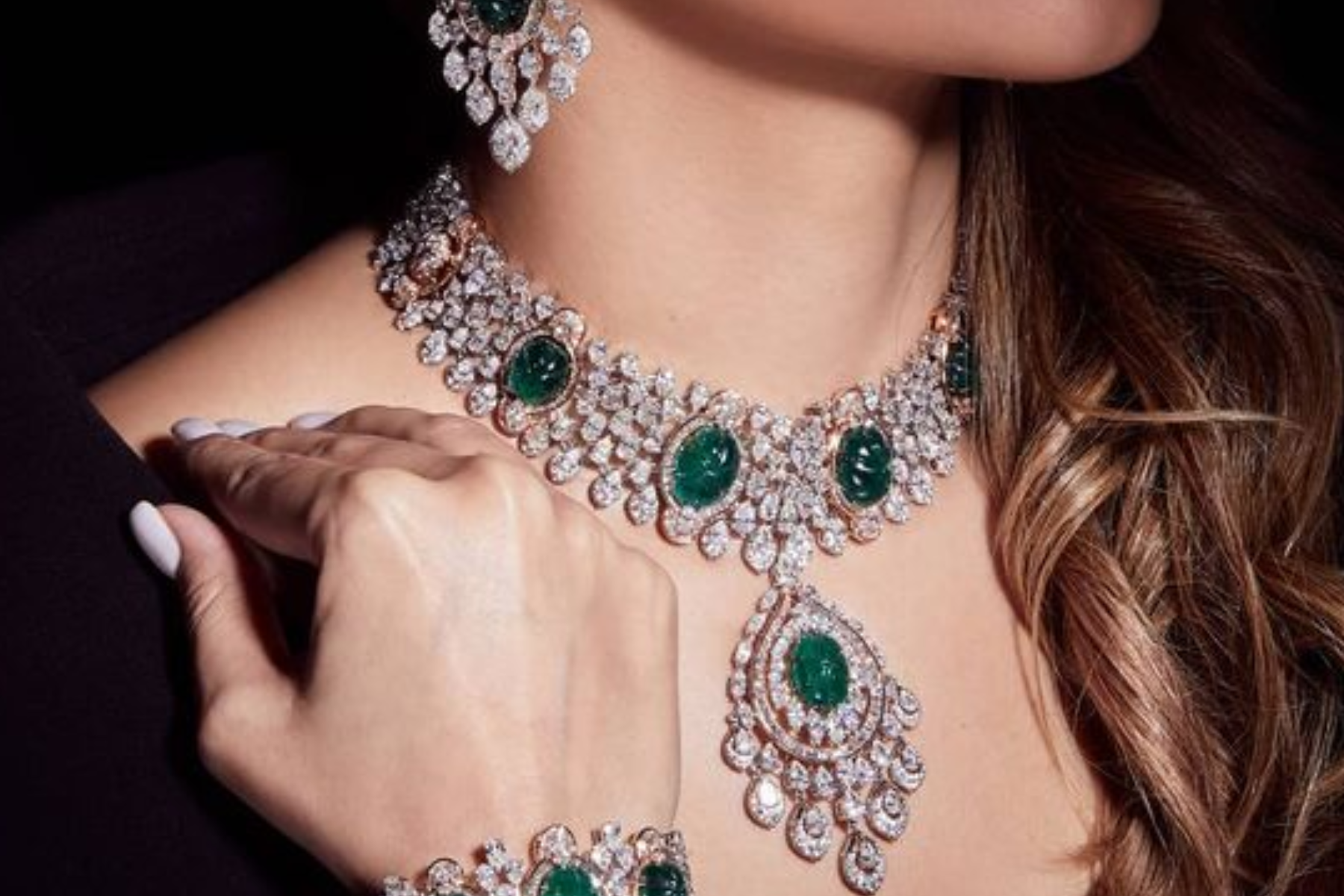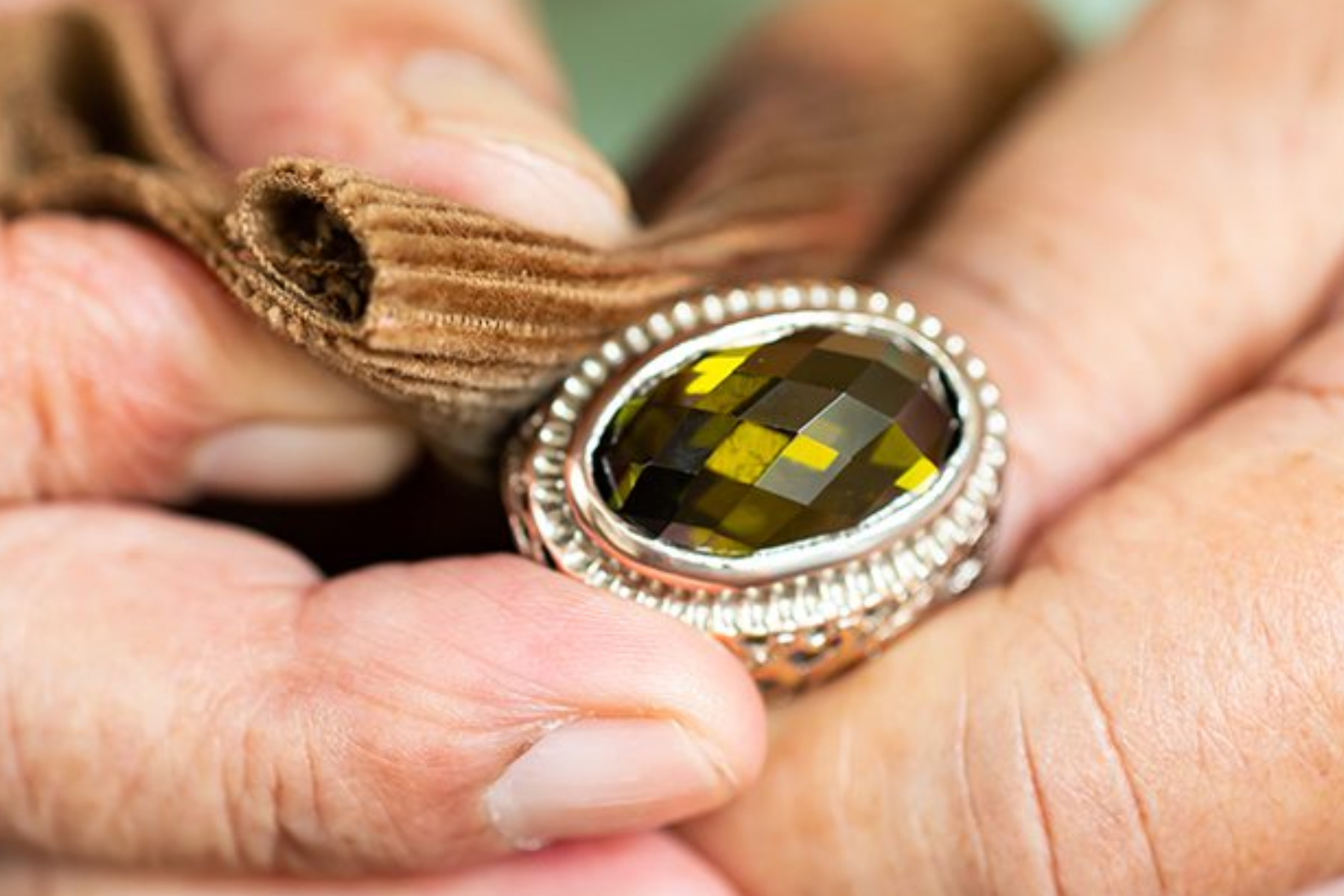A victorian vintage jewelryis known for its intricate designs, stunning craftsmanship, and romantic symbolism.
Jewelryhas been an integral part of human history for centuries, serving as a symbol of wealth, power, and social status.
While modern-day jewelry designs may vary, there is something timeless and captivating about vintagejewelry that has stood the test of time. One particular era that stands out in the world of vintage jewelry is the Victorian era.
Understanding The Victorian Era
The years 1837 to 1901 comprise the time period known as the Victorian era, which was named after Queen Victoria of England.

The Victorian Era Explained: The 18 y/o Monarch of England
This time period was distinguished by the speed with which it industrialized, made advances in science, and underwent cultural upheavals.
Jewelry was a means by which individuals could express themselves while adhering to the era's stringent social rules. This was especially important during the Victorian period, which was likewise characterized by severe social conventions.
Because jewelry was so commonly given as a present or handed down through generations as an heirloom, it plays a significant role in the history and customs of many families.
Characteristics Of Victorian Vintage Jewelry
The craftsmanship, appearance, and meaning of vintage jewelry from the Victorian era are all distinctive.
The romanticism movement had a significant impact on the jewelry of this time period, which frequently featured designs that were inspired by nature, such as flowers, leaves, and birds.
Gothic and Renaissance styles were also sources of inspiration for jewelry designers working during this era, which resulted in creations that were elaborate and ornate.
The usage of many jewels is one of the most distinctive characteristics of Victorian-era vintage jewelry.
Garnets, amethysts, and topazwere among the semi-precious stones that were frequently used in jewelry. Precious stones like diamonds, rubies, sapphires, and emeralds were also popular options.
Yellow goldwas the most common choice for setting these jewels; however, rose gold and silverwere also common options.
The Appeal Of Victorian Vintage Jewelry
The fascination of vintage jewelry from the Victorian era resides in its extensive history as well as its ornate designs.
The craftsmanship of each piece is a monument to the talent and artistry of the jewelry manufacturers of the time period, and each piece has its own history to tell.
As a result of many pieces being handed down through the generations of families, Victorian vintage jewelry also carries a significant amount of sentimental significance.
Vintage jewelry from the Victorian era is widely sought after not just because of its historical relevance but also because of its beauty and one-of-a-kind quality.
The designs are completely unique to anything else that has been developed in recent times, and the attention to detail is unrivaled.
The right piece of Victorian vintage jewelry is a conversation starter that can take any ensemble to the next level and add a dash of class and refinement.
The Evolution Of Victorian Vintage Jewelry - From Early Victorian To Late Victorian Styles
The period known as the Victorian era, which stretched from 1837 to 1901, was a time of tremendous expansion and change in Britain as well as the rest of the world.
The Victorian era was witness to a meteoric rise in the popularity of jewelry, and the jewelry that was produced during this time period is still quite desirable among collectors and jewelry enthusiasts today.

Symbolism in Victorian Jewels
Early Victorian, Mid-Victorian, and Late Victorian are the three distinct periods that may be distinguished from one another within the Victorian era. Each of these periods is distinguished by its very own distinct style and traits.
In this part, we will examine the progression of Victorian vintage jewelry from early Victorian styles to late Victorian styles, moving chronologically from earlier to later.
Early Victorian Jewelry (1837-1860)
Early Victorian jewelry, also known as Romantic jewelry, is characterized by its intricate and delicate designs.
During this period, jewelry was often given as a gift or passed down as an heirloom, making it an important part of family history and tradition.
The most popular materials for jewelry during this period were gold and silver, with diamonds and pearls being the most popular gemstones.
One of the defining features of early Victorian jewelry was its use of motifs inspired by nature. Designs featuring flowers, leaves, and birds were popular, with many pieces also featuring snakes, which were a symbol of eternal love.
Another popular motif during this time was the acrostic, which used the first letter of each gemstone to spell out a message. For example, the word "REGARD" could be spelled out using ruby, emerald, garnet, amethyst, ruby, and diamond.
Mid-Victorian Jewelry (1860-1880)
The bold and grandiose designs that are characteristic of Mid-Victorian jewelry, also known as Grand jewelry, are what give this style of jewelry its name.
During this time period, mass production and jewelry created by machines became increasingly common, which increased the number of individuals who could afford to buy jewelry.
Gold and silver were by far the most commonly used metals for the production of jewelry throughout this time period. Diamonds, rubies, and sapphires were the three most commonly used gemstones.
One of the defining features of mid-Victorian jewelry was its use of dark colors and heavy designs. This was a reflection of the mourning culture of the time, which placed a great emphasis on death and grief.
Black enamel, jet, and onyxwere popular materials during this period, and jewelry often featured sentimental motifs such as urns, crosses, and angels.
Late Victorian Jewelry (1880-1901)
Late Victorian jewelry, also known as Aesthetic or Art Nouveau jewelry, is characterized by its intricate and detailed designs.
During this period, there was a growing interest in the natural world and Eastern cultures, which had a profound influence on jewelry design.
The most popular materials for jewelry during this period were gold and silver, with diamonds, pearls, and colored gemstones being the most popular.
One of the defining features of late Victorian jewelry was its use of asymmetrical and abstract designs.
Jewelry often featured intricate scrollwork, sinuous lines, and flowing curves, which were inspired by natural forms such as flowers, leaves, and animals. Japanese motifs such as dragons, birds, and fans were also popular during this period.
Caring For Victorian Vintage Jewelry
While Victorian vintage jewelry is durable and well-made, it does require proper care to maintain its beauty and value.
It is important to avoid exposing the jewelry to harsh chemicals, such as cleaning products or perfumes, as they can damage the stones and metal.
Cleaning the jewelry with a soft cloth and warm, soapy water is the safest and most effective way to keep it clean.
People Also Ask
What Makes Victorian Jewelry Valuable?
Victorian jewelry is valuable due to its unique designs, rare materials, and historical significance. Many pieces were handmade and incorporate intricate details and symbolism, making them highly collectible.
What Types Of Gemstones Were Used In Victorian Jewelry?
Victorian jewelry featured a variety of gemstones, including diamonds, pearls, rubies, sapphires, amethysts, and emeralds. Semi-precious stones such as garnets, topaz, and turquoisewere also popular during this time period.
How Do You Identify Victorian Jewelry?
Victorian jewelry can be identified by its unique style and characteristics, including intricate designs, the use of natural motifs, and sentimental symbolism. Hallmarks and maker's marks can also provide clues to the origin and age of the piece.
How Should You Care For Victorian Vintage Jewelry?
To care for Victorian vintage jewelry, it is important to store it in a dry and cool place away from direct sunlight. Avoid exposing the jewelry to moisture or chemicals, and handle it with care to prevent damage. Regular cleaning with a soft cloth and mild soap can help to keep the jewelry looking its best.
Conclusion
Victorian vintage jewelry is a testament to the artistry and craftsmanship of the Victorian era. The intricate designs, use of gemstones, and romantic symbolism make it a highly sought-after style of vintage jewelry.
While caring for Victorian vintage jewelry requires some extra attention and care, the beauty and historical significance of each piece make it well worth the effort.
Whether worn as a statement piece or passed down as a family heirloom, Victorian vintage jewelry is a timeless treasure that will continue to captivate and inspire generations to come.

